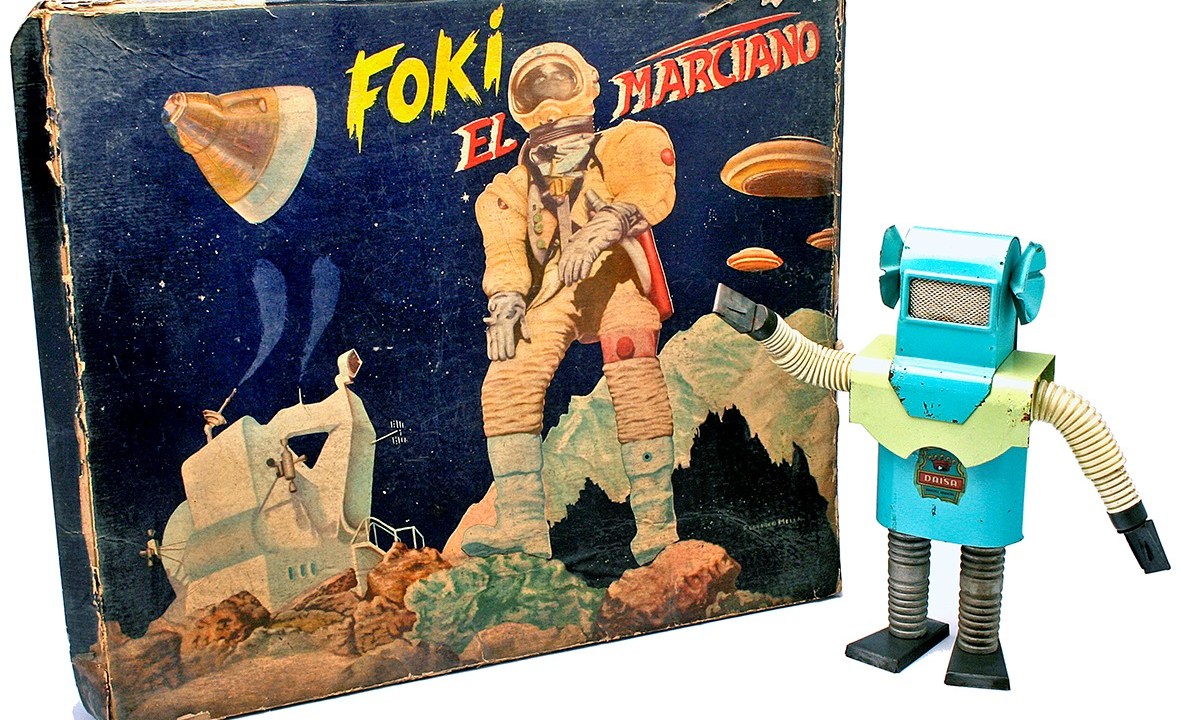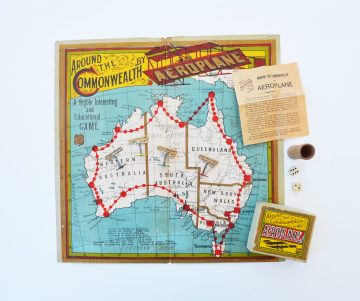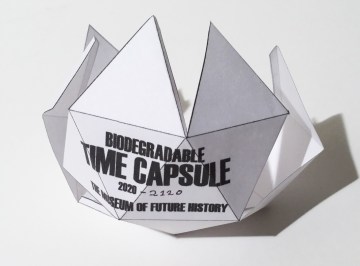
Those of you who follow my writing may be aware of my passion about the need to decolonize the future. I believe museums can play a vital role in helping the public be better stewards of the world we leave to future generations. Today’s guest post by Jonathon Keats (artist, writer and experimental philosopher) shares a museum project that goes one step further, bypassing grown-ups to help children free themselves from temporal tyranny.
–Elizabeth Merritt, Vice President, Strategic Foresight, and Founding Director, Center for the Future of Museums, American Alliance of Museums
Although the right to collective self-determination has been recognized for centuries, societies often make decisions that limit the opportunities of future generations. From the inflexibility of colossal infrastructure to the environmental impact of anthropogenic climate change, our actions can have consequences that outlast us.
But there are also more subtle ways in which future generations are dominated by those preceding them. One of the most coercive is the psychological impact of futuristic visions. Propagated through mechanisms ranging from urban planning to popular culture, these aspirations and premonitions may be so seductive that they become self-fulfilling prophecies. The world that future generations inherit is largely shaped by present assumptions about it.
For this reason, forward-looking futurists have parted ways with forecasters of the past. Since 2012, UNESCO has led a global campaign to decolonize the future, protecting and preserving the autonomy of those who will come after us through the practice of Futures Literacy. It is therefore apt that UNESCO will host the first exhibition of the new Museum of Future History at the High-Level Futures Literacy Summit this month. (You can register for the conference here.)
The mission of the Museum of Future History is to reveal how the future is routinely colonized by futuristic visions from the past, and to provide resources for more open-ended and pluralistic uses of the future in order to prevent colonization from happening in the first place. We believe that these goals can be achieved by helping people of today to recognize the perils of temporal colonization in terms of their own lives. How has the present been defined preemptively by previous generations? What opportunities have been lost as a result? How might we look forward in the interest of preparedness – and out of responsibility for our actions – without influencing decisions that ought to take future contingencies into account and that our generation has no right to make?
At the core of the museum is a collection of historic objects representing past visions of the future that have shaped the present, together with a repository of research about the impact of these objects on the world in which we live. Spanning the past several centuries, the collection is supplemented with new objects representing present-day visions of the future, as well as an archive of past and present written forecasts and predictions.
Areas of interest range from home furnishings and household gadgets to packaged foods and hygiene products. Emphasis is placed on objects that have conceptually colonized the present or may conceptually colonize the future (such as fashion inspired by science fiction), but the collection also includes items that colonize the future functionally (such as computers that become intractable legacy systems). The accompanying archive encompasses official governmental forecasts, books by prominent futurists, and even New Year’s predictions published in tabloid newspapers. These materials are selected by the Museum of Future History curators in consultation with Futures Literacy experts at UNESCO, and with additional input from a global consortium of scholars, collectors, and interested members of the public.
That said, the Museum of Future History is still inchoate, and we are working in conditions defined by a global pandemic. As we still lack a physical space, and the Futures Literacy Summit is an online event, we have accessioned only a few objects, and have focused our initial efforts on virtual representation of items we intend to acquire in the future. This approach has informed our first exhibition, which will be exclusively online. The exhibition is titled Toying With Tomorrow, and our focus is on playthings.

Why toys? Toys are the first objects to shape how children perceive what lies ahead, children are more vulnerable to influence than adults, and children are living representatives of the future that the present threatens to colonize. Changing the way in which toys are conceptualized may therefore have the most immediate and profound impact on liberating future generations from the burden of our present assumptions.
So we believe that an exhibition of futuristic toys – collected from every inhabited continent and spanning the entire 20th century – may be one of the most effective means at our disposal to pursue our core mission. The toys alert us to the long-term real-world impact of objects that have been traditionally dismissed as trivial.
A workshop on decolonization through toy modification, also planned for the UNESCO Summit, will provide an opportunity to scrutinize the exhibited objects and consider the affordances of futuristic toys more broadly. Even the most notoriously manipulative playthings can be rectified. For instance a pair of X-Ray Spex from the 1960s – which purportedly let the viewer see through people’s clothing – can be converted into an optical device for looking forward in time by replacing the diffraction grating responsible for the x-ray illusion with prisms that dazzle the eyes with multiplicity and uncertainty. The practice of hacking the past, useful in its own right, may also provide heuristics for more generative toy design going forward.
In addition to collecting and exhibiting historical objects, the Museum of Future History plans to produce new items designed to decolonize the future. The first of these is a biodegradable time capsule intended to hold visions of the future and to decompose before that future arrives. The time capsule – a sort of philosophical toy – can be made by anyone using the template provided here.

Like the biodegradable time capsule, the Museum of Future History can be construed as a philosophical instrument. It is a philosophical instrument in the form of a cultural institution, designed to inspire open-ended dialogue about how we think about and interact with possible futures.
To be responsible, we need simultaneously to plan ahead and to be sensitive to the consequences of planning: to prepare the way for a better future without colonizing it with our beliefs and desires. Striking the right balance is one of the greatest challenges of Futures Literacy, a challenge that remains unresolved today. The Museum of Future History is not only a showcase of past hubris but also an instrument for collective experimentation
Jonathon Keats is an artist, writer and experimental philosopher, and the founding director and curator of the Museum of Future History. His conceptually-driven interdisciplinary projects explore all aspects of society through science, technology, and culture. He has exhibited and lectured at dozens of institutions worldwide, from the Samek Art Museum to Stanford University to CERN to SXSW. He is the author of six books on subjects ranging from science and technology to art and design – most recently You Belong to the Universe: Buckminster Fuller and the Future, published by Oxford University Press – and the author of a weekly online art and design column for Forbes. He has been an artist-in residence at the Fraunhofer Institute for Building Physics and the Los Angeles County Museum of Art’s Art + Technology Lab, a Black Mountain College Legacy Fellow at the University of North Carolina-Asheville, and a Research Fellow at the Nevada Museum of Art’s Center for Art + Environment, and he is currently a Polar Lab Artist at the Anchorage Museum, a Visiting Scholar at San Jose State University, and an Artist-in-Residence at the SETI Institute, UC San Francisco’s Memory and Aging Center, and the UC Berkeley’s Sagehen Creek Field Station. A monograph about his art is forthcoming from Hirmer Verlag.








